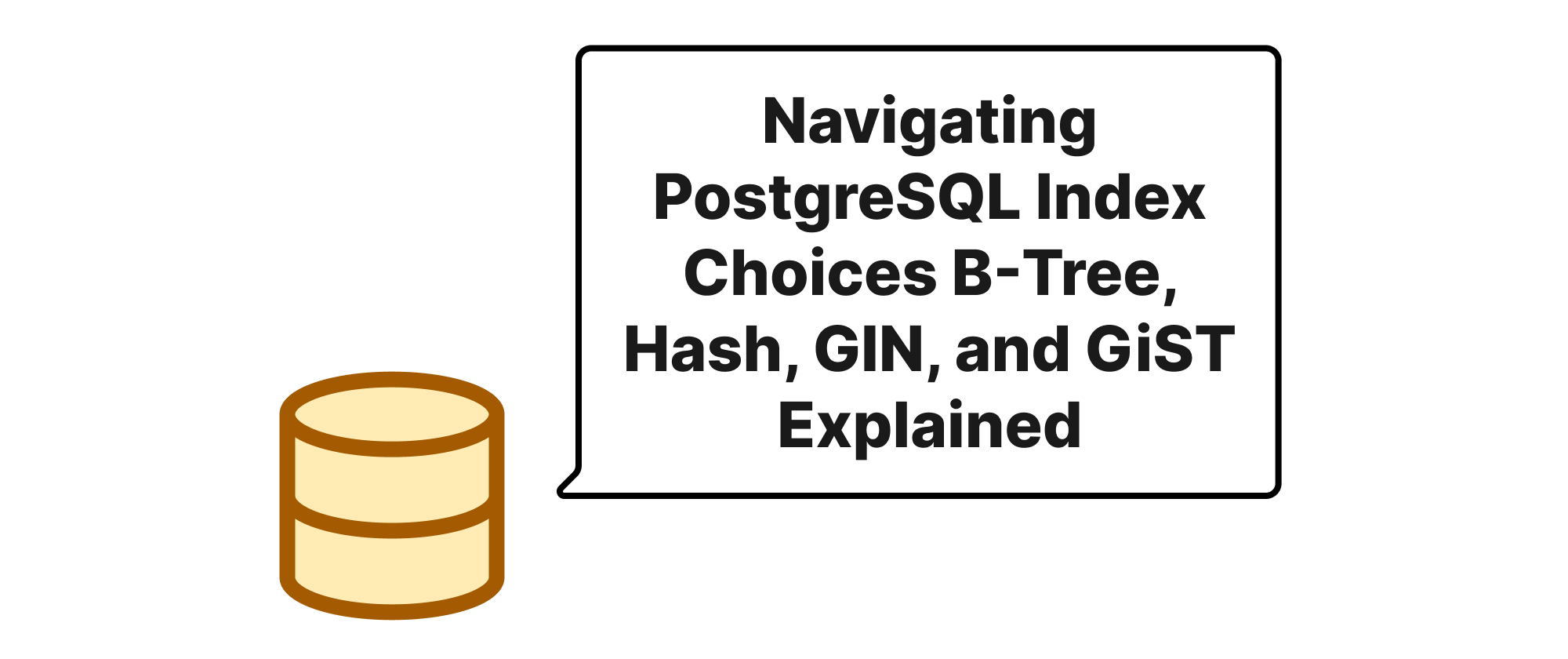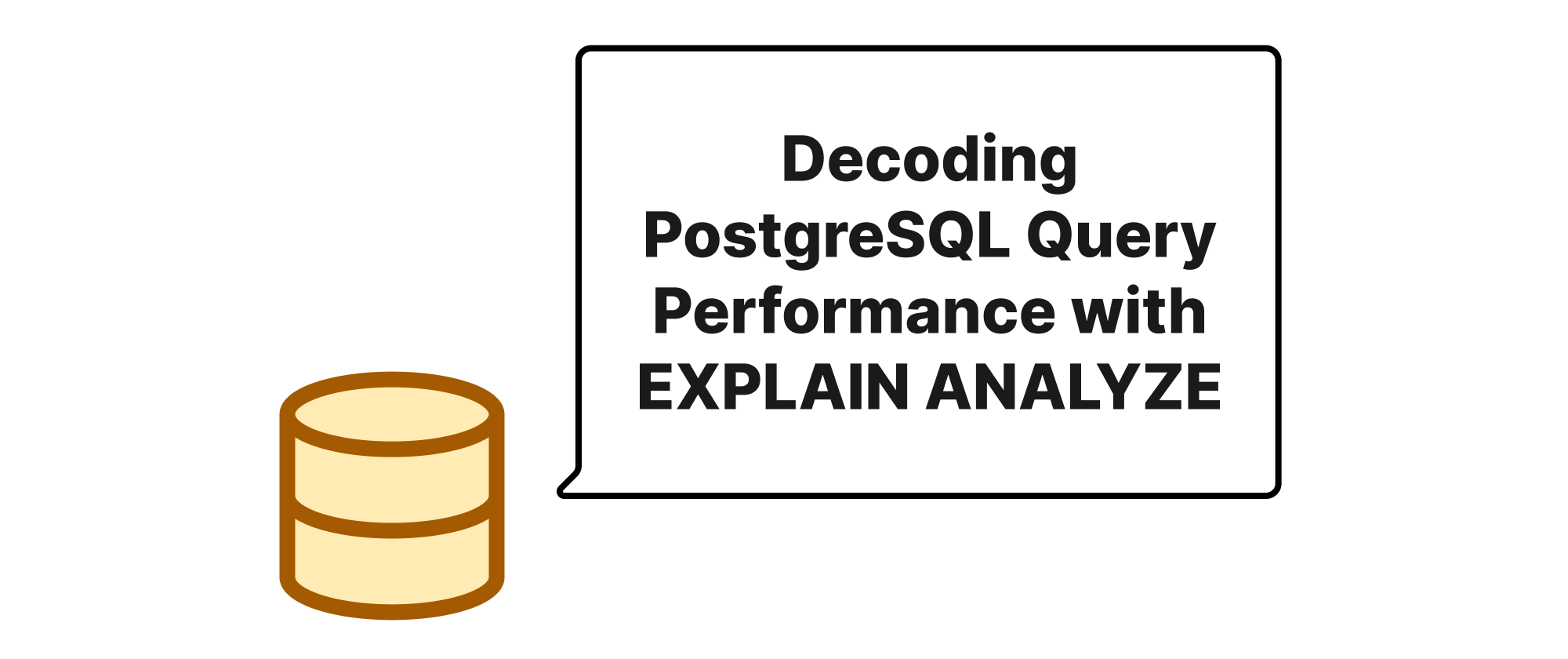Navigating PostgreSQL Index Choices B-Tree, Hash, GIN, and GiST Explained
Emily Parker
Product Engineer · Leapcell

Introduction
In the realm of database management, optimizing query performance is a perpetual pursuit. As datasets grow exponentially, the efficiency of retrieving and processing information directly impacts an application's responsiveness and scalability. PostgreSQL, a powerful and feature-rich open-source object-relational database system, offers a diverse array of indexing strategies to accelerate data access. However, simply creating an index isn't a silver bullet; choosing the right index type for specific data structures and query patterns is paramount. This article delves into the nuances of PostgreSQL's most prominent index types—B-Tree, Hash, GIN, and GiST—exploring their underlying mechanisms, ideal use cases, and how to effectively deploy them to unlock significant performance gains. Understanding these distinctions is not just an academic exercise; it's a critical skill for any database professional aiming to build robust and high-performing applications.
Core Indexing Concepts
Before we dive into the specific index types, let's establish a foundational understanding of key indexing concepts that will underpin our discussion.
- Index: A data structure that improves the speed of data retrieval operations on a database table. It acts like a book's index, allowing the database to quickly locate specific rows without scanning the entire table.
- Indexing Strategy: The particular algorithm or data structure used to organize the index data. Different strategies are optimized for different types of data and query patterns.
- Sequential Scan: A method where the database examines every row in a table or every row in a large portion of a table to find the desired data. This is typically very slow for large tables.
- Index Scan: A method where the database uses an index to directly locate the desired data, often resulting in much faster retrieval.
- Operator Classes: In PostgreSQL, operator classes define for a particular data type which operators (e.g.,
=,>,@>) are supported by a specific index type. - Selectivity: The fraction of rows that a particular query condition matches. High selectivity (few matching rows) makes indexes more effective.
- Cardinality: The number of unique values in a column. High cardinality generally favors indexing.
With these terms in mind, let's explore the individual index types.
B-Tree Indexes
The B-Tree (Balanced Tree) index is the most commonly used and default index type in PostgreSQL. It's a general-purpose index structure designed for efficient retrieval of data based on equality and range comparisons.
Principle and Implementation: A B-Tree is a self-balancing tree data structure that maintains sorted data and allows searches, sequential access, insertions, and deletions in logarithmic time. Each node in the tree can have multiple children, providing a "fatter" and "shorter" tree compared to binary trees, which reduces the number of disk I/O operations required to traverse it. The leaf nodes of a B-Tree contain pointers to the actual data rows in the table.
Applicable Scenarios:
- Exact Match Queries: When you frequently query for specific values.
SELECT * FROM users WHERE user_id = 12345; CREATE INDEX idx_users_user_id ON users (user_id); - Range Queries: When you query for data within a certain range.
SELECT * FROM orders WHERE order_date BETWEEN '2023-01-01' AND '2023-01-31'; CREATE INDEX idx_orders_order_date ON orders (order_date); ORDER BYandGROUP BYClauses: B-Tree indexes can help accelerate sorting and grouping operations because the data within the index is already sorted.SELECT user_id, COUNT(*) FROM posts GROUP BY user_id ORDER BY user_id; CREATE INDEX idx_posts_user_id ON posts (user_id);- Foreign Key Columns: Indexing foreign key columns is a common practice to speed up joins.
CREATE INDEX idx_orders_customer_id ON orders (customer_id);
Example:
Consider a products table with millions of rows.
CREATE TABLE products ( product_id SERIAL PRIMARY KEY, product_name TEXT NOT NULL, price DECIMAL(10, 2), category TEXT ); -- Creating a B-Tree index on product_name CREATE INDEX idx_products_name ON products (product_name); -- This query will benefit from the B-Tree index EXPLAIN ANALYZE SELECT * FROM products WHERE product_name = 'Laptop Pro X'; -- This range query will also benefit EXPLAIN ANALYZE SELECT product_name, price FROM products WHERE price BETWEEN 500.00 AND 1000.00;
Hash Indexes
Hash indexes are designed for extremely fast equality comparisons. They use a hash function to compute a hash value for the indexed column and store pointers to the data rows in a hash table.
Principle and Implementation: When a new row is inserted, its indexed column's value is passed through a hash function, which generates a hash code. This code determines the "bucket" in the hash table where the row's physical address (TID) will be stored. During a query, the same hash function is applied to the search value, directly leading the database to the correct bucket, minimizing search time.
Applicable Scenarios:
- Exact Equality Queries: Their primary strength is in very fast lookups for exact matches.
SELECT * FROM users WHERE email = 'john.doe@example.com'; CREATE INDEX idx_users_email_hash ON users USING HASH (email);
Limitations:
- No Range Queries: Hash indexes cannot be used for range queries (
<,>,BETWEEN). They only support equality. - No
ORDER BY: They don't store data in any sorted order, so they are not useful forORDER BYclauses. - Lower Concurrency in Older Versions: Historically, hash indexes had significant concurrency issues, making them less popular than B-Trees. While greatly improved in PostgreSQL 10+, B-Trees are often still preferred due to their broader applicability and robust performance.
- Not Crash Safe: Prior to PostgreSQL 10, hash indexes were not WAL-logged, meaning they were not crash-safe and had to be rebuilt after a crash. This limitation has been resolved in PostgreSQL 10 and later.
Example:
-- Creating a Hash index on a unique identifier column CREATE INDEX idx_customers_uuid_hash ON customers USING HASH (uuid_column); -- This exact match query will be very fast EXPLAIN ANALYZE SELECT * FROM customers WHERE uuid_column = 'a1b2c3d4-e5f6-7890-1234-567890abcdef';
Despite the improvements, due to their limited use cases compared to B-Tree, hash indexes are still less frequently recommended unless very specific, high-volume equality lookups are absolutely critical and other index types prove insufficient.
GIN Indexes
GIN (Generalized Inverted Index) indexes are designed for indexing columns that contain multiple values within a single column, such as arrays, JSONB documents, or full-text search data. They are particularly effective for "contains" or "overlap" queries.
Principle and Implementation: A GIN index works by storing a list of locations (TIDs) for each individual element or "lexeme" within the indexed data. Essentially, it's an inverted index: for every unique "word" or item in the data, it lists where that item appears.
Applicable Scenarios:
- Full-Text Search: The most common and powerful use case for GIN indexes, combined with
tsvectorandtsquery.ALTER TABLE articles ADD COLUMN textsearchable_content tsvector; UPDATE articles SET textsearchable_content = to_tsvector('english', title || ' ' || content); CREATE INDEX idx_articles_fts ON articles USING GIN (textsearchable_content); SELECT * FROM articles WHERE textsearchable_content @@ to_tsquery('english', 'database & performance'); - JSONB Queries: Efficiently querying keys or values within JSONB documents using
?,?|,?&,@>, and<@operators.CREATE TABLE documents ( doc_id SERIAL PRIMARY KEY, data JSONB ); CREATE INDEX idx_documents_data_gin ON documents USING GIN (data); -- Check if a specific key exists SELECT * FROM documents WHERE data ? 'author'; -- Check for array containment SELECT * FROM documents WHERE data->'tags' @> '["programming"]'; - Array Columns: Searching for elements within array types.
CREATE TABLE product_features ( product_id INT, features TEXT[] ); CREATE INDEX idx_product_features_gin ON product_features USING GIN (features); SELECT * FROM product_features WHERE features @> ARRAY['waterproof', 'durable'];
Example:
CREATE TABLE books ( book_id SERIAL PRIMARY KEY, title TEXT, authors TEXT[] ); -- Populate with some data INSERT INTO books (title, authors) VALUES ('The Hitchhiker''s Guide to the Galaxy', ARRAY['Douglas Adams']), ('Pride and Prejudice', ARRAY['Jane Austen']), ('Neuromancer', ARRAY['William Gibson']), ('Foundation', ARRAY['Isaac Asimov']), ('Dune', ARRAY['Frank Herbert']), ('The Martian', ARRAY['Andy Weir']); -- Create a GIN index on the 'authors' array CREATE INDEX idx_books_authors ON books USING GIN (authors); -- This query will use the GIN index for efficient element lookup within the array EXPLAIN ANALYZE SELECT * FROM books WHERE authors @> ARRAY['Douglas Adams'];
GIN indexes can be slower to build and update than B-Tree indexes because of their complex structure, but they offer unparalleled performance for the types of "contains" and "overlap" queries they are designed for.
GiST Indexes
GiST (Generalized Search Tree) indexes are highly flexible and extensible, designed to handle complex data types and query patterns that don't fit neatly into B-Tree structures. They are particularly useful for spatial data, geometric types, and some full-text search requirements.
Principle and Implementation: GiST indexes are balanced tree structures, but unlike B-Trees, their internal nodes are not necessarily disjoint. Each internal node represents a "bounding box" or "minimum bounding region" that encloses the regions represented by its children. This allows for approximate searching, where the index can quickly narrow down the search space. GiST is a "template" for creating new index types, rather than a specific index itself; it provides the framework, and specific "operator classes" implement the logic for different data types.
Applicable Scenarios:
- Geometric and Spatial Data: Widely used for
point,box,polygon,circle,pathdata types, often with PostGIS for advanced spatial queries. Operators like&&(overlap),@>(contains),<@(is contained by),<->(distance) are common.CREATE TABLE locations ( location_id SERIAL PRIMARY KEY, coordinates POINT ); CREATE INDEX idx_locations_coordinates ON locations USING GiST (coordinates); -- Find locations within a bounding box SELECT * FROM locations WHERE coordinates <@ box '(10,10),(20,20)'; - Range Types: Indexing PostgreSQL's built-in range types (e.g.,
int4range,tsrange) for overlap and containment queries.CREATE TABLE bookings ( booking_id SERIAL PRIMARY KEY, room_id INT, booking_period TSRANGE ); CREATE INDEX idx_bookings_period ON bookings USING GiST (booking_period); -- Find bookings that overlap with a specific time slot SELECT * FROM bookings WHERE booking_period && '[2024-01-01 10:00, 2024-01-01 12:00)'::tsrange; - Full-Text Search (Alternative to GIN): While GIN is often preferred for full-text search due to faster lookup times, GiST can be used as well and shines for ordered nearest-neighbor searches (e.g., finding documents where lexemes are close to each other). GiST's build time is often faster than GIN.
ALTER TABLE articles ADD COLUMN ts_content tsvector; UPDATE articles SET ts_content = to_tsvector('english', title || ' ' || content); CREATE INDEX idx_articles_title_content_gist ON articles USING GiST (ts_content); -- This will use the GiST index for full-text search SELECT * FROM articles WHERE ts_content @@ to_tsquery('database & postgres'); - K-Nearest Neighbor (KNN) Searches: GiST indexes are excellent for finding the closest items in multi-dimensional space using the
<->operator.-- Assuming a PostGIS point column 'geom' CREATE INDEX idx_places_geom ON places USING GiST (geom); SELECT * FROM places ORDER BY geom <-> ST_SetSRID(ST_MakePoint(-74.0, 40.7), 4326) LIMIT 10;
Example:
-- Requires the btree_gist extension for some data types, but default types like point work out of box. -- For range types, the built-in GiST operator class is sufficient. CREATE TABLE events ( event_id SERIAL PRIMARY KEY, event_name TEXT, duration TSRANGE ); INSERT INTO events (event_name, duration) VALUES ('Morning Meeting', '[2024-03-10 09:00, 2024-03-10 10:00)'::tsrange), ('Lunch Break', '[2024-03-10 12:00, 2024-03-10 13:00)'::tsrange), ('Project Review', '[2024-03-10 14:00, 2024-03-10 16:00)'::tsrange); -- Create a GiST index on the 'duration' tsrange column CREATE INDEX idx_events_duration ON events USING GiST (duration); -- Find events that contain a specific timestamp EXPLAIN ANALYZE SELECT * FROM events WHERE duration @> '2024-03-10 09:30'::timestamp; -- Find events that overlap with a given range EXPLAIN ANALYZE SELECT * FROM events WHERE duration && '[2024-03-10 15:00, 2024-03-10 17:00)'::tsrange;
GiST indexes are incredibly powerful due to their extensibility, but they can be more complex to understand and maintain than B-Tree indexes. When in doubt for complex data types, GiST is often the answer.
Conclusion
Choosing the appropriate index type in PostgreSQL is an art and a science, directly impacting query performance and overall database efficiency. B-Tree indexes serve as the workhorse for most standard equality and range queries, providing a robust default. Hash indexes offer ultra-fast equality checks but come with significant limitations. GIN indexes shine when dealing with multi-valued columns like arrays and JSONB, especially for "contains" and full-text search queries. Finally, GiST indexes provide a highly flexible framework for handling complex data types such as spatial data and range types, excelling in overlap and nearest-neighbor searches. By carefully analyzing your data structures and query patterns, you can strategically apply these diverse indexing mechanisms to significantly optimize your PostgreSQL database for unparalleled performance.


